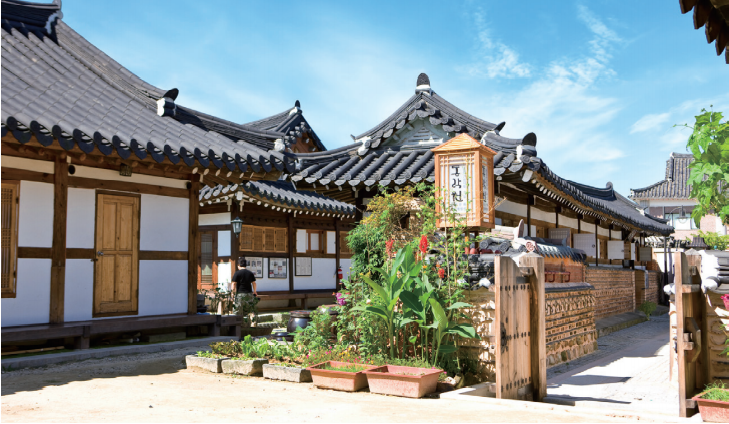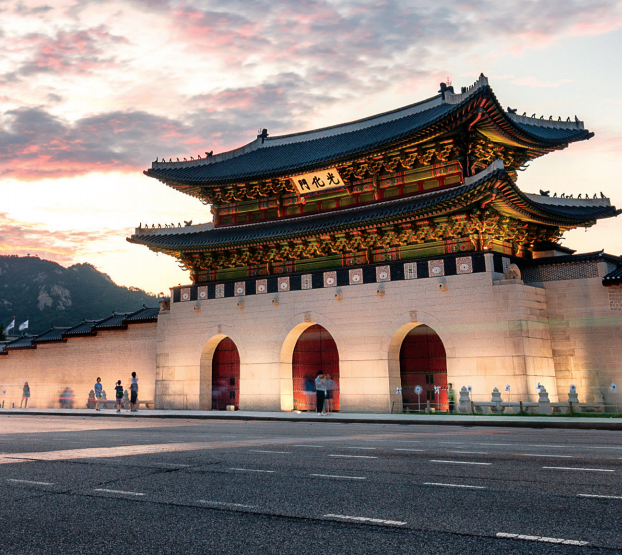Información de Corea – Turismo
Armonía entre la Tradición y la Modernidad
Corea del Sur cuenta con una gran variedad de atracciones turísticas. Los turistas pueden experimentar la distintiva armonía entre el patrimonio cultural histórico y la cultura moderna. Con estas identidades locales preservadas, los turistas también pueden explorar y disfrutar de las culturas locales, los entornos naturales y la comida única.
Entre las atracciones turísticas más populares de Corea del Sur, los valores modernos a menudo se proyectan sobre el patrimonio cultural histórico, o por el contrario, se añaden elementos tradicionales a los espacios modernos. Estos lugares no solo sirven como un valioso patrimonio cultural y espacios vibrantes de vida para los coreanos, sino también como un punto de partida para que los extranjeros visiten Corea.
Aldeas Hanok

Aldea Hanok de Bukchon
Situada en la cima de una colina, la Aldea Hanok de Bukchon ofrece un paisaje único donde las casas tradicionales coreanas y las estructuras modernas se armonizan perfectamente.

Aldea Hanok de Jeonju

The Moonlight Tour at Gyeongbokgung Palace is one of the most popular tour programs in South Korea.
A royal palace, which is an indispensable destination for Korean tourism, features distinctly different sentiments between day and night. Tourists flock to the palace during the day to experience a tranquil and relaxed atmosphere. When covered with a veil of darkness, the palace boasts of a different mood. The subtle lighting and mysterious acoustic effects add up different charms. As those attractive features are known through social networking services, royal palaces have recently emerged as new night attractions.
Among royal palaces that open at night are the four major palaces in Seoul (Gyeongbokgung Palace, Changdeok Palace, Changgyeong Palace, and Deoksugung Palace) and Hwaseong Haenggung Palace in Suwon. Whether tour programs are available depends on each royal palace, but if it is, reservations must be made on the website.


Seúl, la capital de la dinastía Joseon, estaba protegida por una larga muralla de piedra con ocho puertas. La Puerta Sungnyemun (también conocida como Namdaemun o Puerta del Sur), que literalmente significa “Puerta de las Ceremonias Exaltadas”, es el Tesoro Nacional N.º 1 de Corea del Sur.
Puerta Heunginjimun y Mercado Dongdaemun

Puerta Heunginjimun
Heunginjimun (Dongdaemun o Puerta del Este) es la única de las ocho puertas de la fortaleza protegida por un muro semicircular de guardia.

Estación Cultural Seúl 284 (antigua Estación de Seúl)
El resultado de transformar la antigua Estación de Seúl en un complejo cultural y artístico multipropósito.


